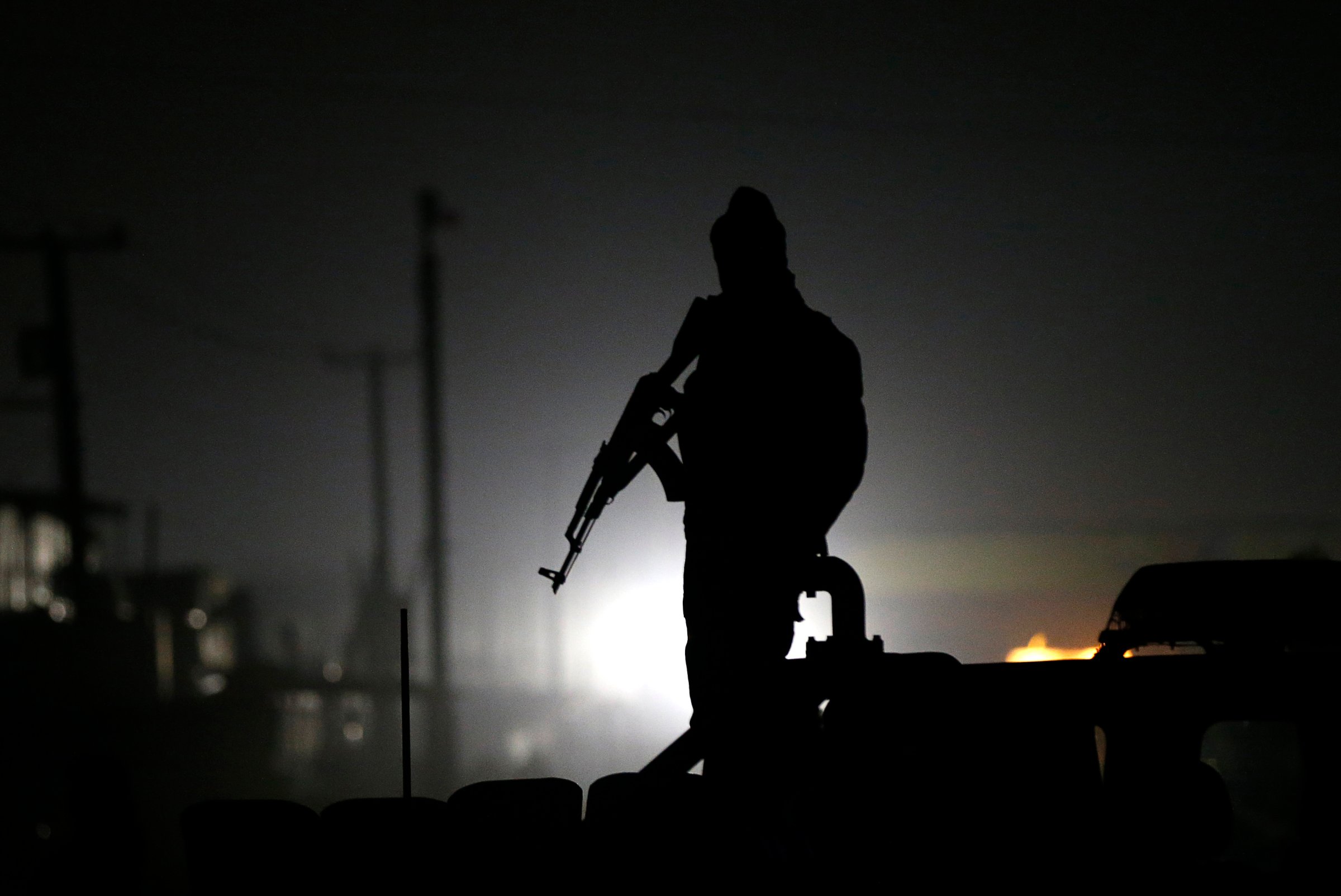
On Saturday, Islamist militants halted a bus crammed with 60 passengers in northeastern Kenya, killing 28 who could not recite a Muslim declaration of faith. The same day, word leaked that President Obama has agreed to a stepped-up combat role for U.S. troops in Afghanistan beyond the original Dec. 31, 2014, deadline.
On Sunday, a suicide bomber killed at least 49 people—mostly kids—at a volleyball game in eastern Afghanistan. Later in the day, the Washington Post told of one of the final U.S. military units readying to ship out for Afghanistan, even as the Taliban grow in strength just outside Kabul.
As the brutality in Africa and Afghanistan suggests, the U.S. preoccupation with defining conflicts by country and calendar is the way nations, not terrorists, wage war. The U.S. mostly views the troubled map stretching from Libya to Pakistan as a chessboard governed by sovereign borders that its foes ignore.
“All across these unstable regions we are confronting a multitude of threats to the U.S. and our interests, from longstanding well-known terrorist groups but also from newer and much more loosely connected networks of like-minded violent extremists,” Nicholas Rasmussen, tapped to head the National Counterterrorism Center, told the Senate Intelligence Committee at his confirmation hearing Thursday. These new breeds, he warned, “operate without regard to national borders or established organizational norms.”
Deaths caused by terrorism jumped from 11,133 in 2012 to 17,958 in 2013, a 61% hike, according to an independent accounting released last Tuesday. Afghanistan, Iraq, Nigeria, Pakistan and Syria accounted for 80% of the toll, according to the nonprofit Institute for Economics and Peace. Officials blamed four radical Islamist groups for two-thirds of the carnage.
Don Rumsfeld was right.
In the falls of 2003, the defense secretary defined the post-9/11 wars as a “long, hard slog.” Eleven years later, war-weary Americans—eager to escape wars that have no intention of letting them go, are gaining an appreciation for what he meant.
“The Middle East is in turmoil with the deepening of the enmity between Sunnis and Shias, the collapse of a number of nation states, really failed states, and the elimination of meaningful borders,” political scientist Michael Curtis wrote in an essay for the weekend’s Halifax International Security Forum (as if to prove the point, jihadists piggybacked on tweets from the gathering in Nova Scotia’s capital to distribute a video featuring a British captive being held by the Islamic State of Iraq and Greater Syria).
Meanwhile, late Friday, the House Intelligence Committee issued a report concluding that the attack on the U.S. consulate in Benghazi, Libya, in 2012 that killed the U.S. ambassador and three other Americans was more screw-up than cover-up. For two years, lawmakers have sought to cast the event as an epic White House scandal, when reality has suggested it was more a string of mistakes and bad luck. A foreigner couldn’t be blamed if she thought GOP lawmakers viewed Obama as a bigger menace than al Qaeda. Imagine if all that partisan firepower had been directed at the real enemy.
The U.S. and its allies have yet to take on this spreading scourge in a way that is sustainable and successful. That’s going to require an international front willing to take on autocracies, kleptomaniacs and nascent nuclear powers. Success won’t come to politicians nervously glancing at their watches, or their electoral calendar. It’s going to take decades. (Senator Rand Paul, R-Ky., took a tentative step in this direction over the weekend when he called for a U.S. declaration of a year-long war against the Islamic State of Iraq and Greater Syria.)
After his memo leaked in 2003, Rumsfeld groused to reporters that the U.S. too often measures the wrong things.
“We have lots of yardsticks and metrics where we can measure things like what’s taking place in Iraq, what’s taking place in Afghanistan, how we’re doing in the finances, how we’re doing in capturing and killing, for example, the top 55 Iraqi leaders or the top al Qaeda leaders,” he said.
But the U.S. and its allies too often have come up empty-handed when it comes to tallying the important numbers.
“How many young people are being taught to go out as suicide bombers and kill people?” Rumsfeld wanted to know. “That’s the question. How many are there? And how does that in-flow of terrorists in the world get reduced so that the number of people being captured or killed is greater than the ones being produced?”
More than a decade after Rumsfeld asked, we still have no idea.
More Must-Reads from TIME
- How Donald Trump Won
- The Best Inventions of 2024
- Why Sleep Is the Key to Living Longer
- How to Break 8 Toxic Communication Habits
- Nicola Coughlan Bet on Herself—And Won
- What It’s Like to Have Long COVID As a Kid
- 22 Essential Works of Indigenous Cinema
- Meet TIME's Newest Class of Next Generation Leaders
Contact us at letters@time.com